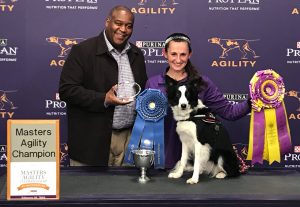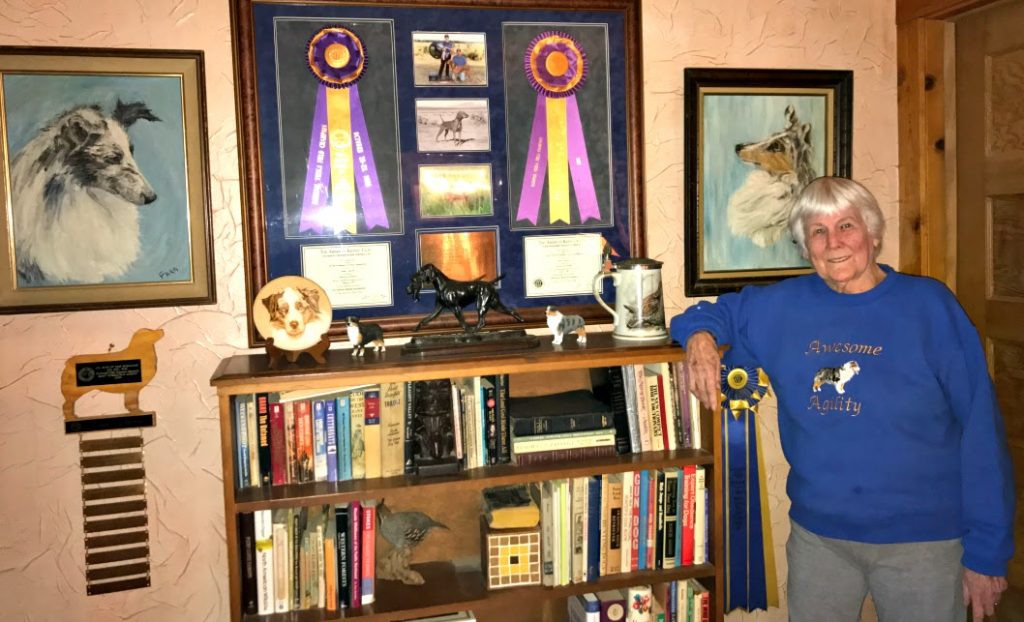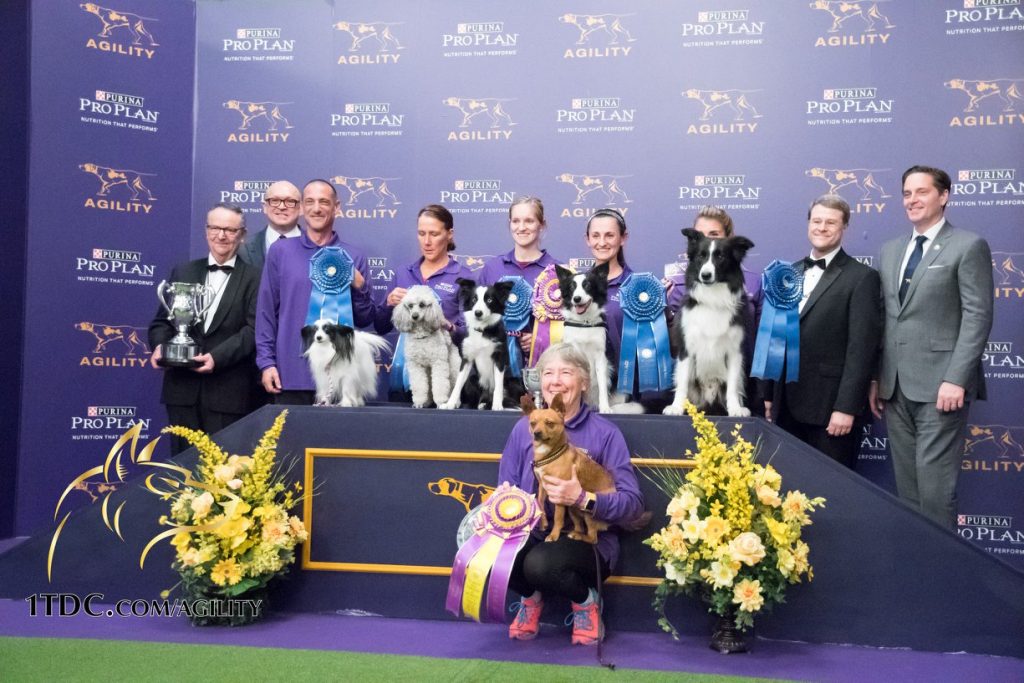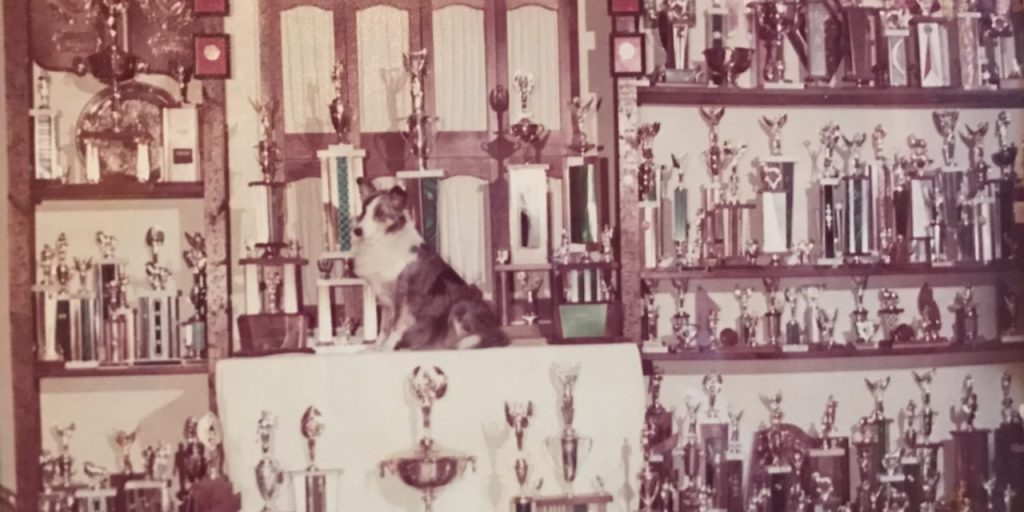169 – Jessica Ajoux Westminster KC Agility Champion Talks Form and Function
WKC AGILITY WINNER SHARES HER THOUGHTS
Jessica Ajoux and her Border Collie, Famous, won the WKC Master Agility Championship in February. She shares her insights on how a dog’s structure affects its performance on the agility course.

Jessica Ajoux and Border Collie, Famous, are the WKC Masters Agility Champions
PASSION FOR AGILITY STARTED EARLY
This February was her first time winning the prestigious WKC competition, but Ajoux started in the sport of agility as a teenager. Her mom drove her to her first classes and agility shows, which were scheduled around school and homework.
Watching an agility competition for the first time on television, Ajoux noted, “I’m not joking when I say the skies parted, angels sang, and I went, ‘Oh my goodness I’m going to be doing that!’ And I have been doing that since that particular day in … 1999.”
Ajoux began her agility competition with a mixed breed dog who she says taught her a lot and was very forgiving. When she graduated from college and was ready to begin competing at the next level, she began her search for a Border Collie.
BORDER COLLIES BECOME THE FOCUS
“One time a friend of mine actually let me run one of her Border Collies and that was it,” Ajoux said. “And I knew that that was the breed of dog I was going to pursue. … They can’t compete at the lower heights … because they obviously don’t measure in. But I just find that they’re the most competitive dog. That doesn’t mean that they’re easy – getting a Border Collie doesn’t solve all the problems. They’re ‘special.’ … you have to actually like the breed too you can’t just think of getting a Border Collie for agility ….”
As Ajoux progressed in her agility training, competition and understanding of the sport, she began to notice that certain dogs were better able to handle the unique athletic requirements of the sport. And she started to see correlation between their underlying structure and their actual ability.
AGILITY ATHLETES
“I train a lot of agility dogs and I watch a lot of dogs do a lot of athletic things,” Ajoux said. “I have a pretty good eye for watching movements and especially related to agility. What I find is that the Border Collies are very athletic and there’s a lot of variation even between the individual dogs. Fame happens to be an exceptionally athletic dog … She has a long neck, a long back, she’s very light and she is able to accelerate and decelerate very well which I think is the key to agility. It’s not just about speed, right, they can run very fast in a straight line but that doesn’t mean that they’re able to slow down and turn, right? They have to be able to downshift well.
“I have another Border Collie, my younger male, and he’s a lovely dog but he’s a little heavier boned. He’s a little straighter in the front and he doesn’t have the ability to what I describe as get underneath himself. … So, he has a much harder time in agility because if you run at a jump at full speed and you’re expected to turn it’s very useful to be able to rock your weight back, have the rear under, have some flexibility in the spine to do that. And it’s just much harder for him and that’s simply based on how he’s built. You can train, you can try to help them with their weaknesses, but ultimately how he moves will never be the same as how Fame moves for example. And it’s very predictable, based on the dogs that they’re related from and that type of thing.”
Agility competitors and breeders are producing what Ajoux described as “sport dogs” bred specifically for the conformation needed for agility. While Border Collies are very successful, she noted, they are originally bred to herd sheep, not jump. While the breed’s inherited speed, dexterity, focus and drive make them a good choice for agility, the functional structure changes some with the particular application of the sport.
“…one of the saddest things I see is people getting upset at dogs and their performances because they’re not ‘doing what they want,’” Ajoux said. Even though training has a huge part of it, I’m never going to be a professional basketball player. I’m not built to be – it’s not going to happen. Right? So you have to be realistic with what they can and can’t do.”
Ajoux talks about the unique structure of the Westminster Kennel Club Masters Agility Championship. She even adds details on injury prevention in canine athletes. Listen to the full length podcast or read the full transcript below. We hope you enjoy this fascinating conversation on the actual application of form following a specific function.
165 – Agility at 83 Years Young: Laurie Morrow
LAURIE MORROW – A LIFETIME IN DOGS
I talk to a lot of famous people on this show. People who have been around the block and have enormous resources of knowledge to share. But one of the things I find the most touching about the purebred dog fancy is that for every well-known name, there are dozens of folks who have worked long and hard, paid their dues, quietly succeeded in their chosen endeavors and just never got around to the fame and fortune part.

Laurie Morrow Trophy Room
Laurie Hatcher Morrowis 83 years old. For 70 of those years she has been actively involved in one aspect or another of purebred dogs. As a young girl, she saved her allowance in order to buy the 1947 edition of the AKC Dog Book. And she studied it until she could recite all 114 breeds. And she decided that the Shetland Sheepdog was the breed for her. At 13 years old, she convinced her father to drop her off at Madison Square Garden for the day so she could watch Westminster Kennel Club.
“I look back on that and I think my god you’d be arrested for child abuse if you left your 13 year old daughter alone at the Garden (today),” Morrow said.
That day at the Garden, Morrow was given the name of a person who might hire her for summer help at their kennel. Little did she know the kennel would turn out to be one of the top Sheltie kennels in the country. She turned 14 the year she spent the summer with them.
“We played a game after dinner. I would go and bring a dog and they would be blindfolded and they could tell every dog in the kennel,” Morrow reminisced. “Eleanor taught me all my beginning obedience training and pretty soon I was doing all the training and it was just great fun and she was right there you know to correct me if I didn’t do it right.”
Morrow’s lifelong love affair with dogs grew from that summer on. Morrow tells the story that she literally broke up with her first true love because his business would have prevented her showing dogs.
Dog shows, breeding, obedience and now agility have kept Morrow busy her entire life. She handled professionally in and around Chicago. She had multiple top winning obedience High in Trial Shelties. She bred, owned and ran Vizsla’s in field trials, including a top winning National Field Champion. She now owns Miniature American Shepherds and started running them in agility at the age of 70.
Morrow is the poster child for all of us who love dogs, who have always had that passion, whose paths in life have more than once been directed or dictated by dogs.
“I just can’t imagine my life without a dog in it,” Morrow said.


